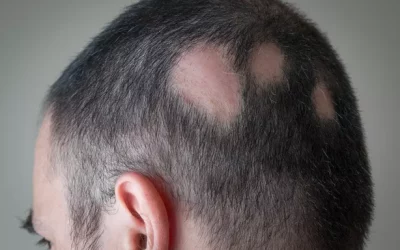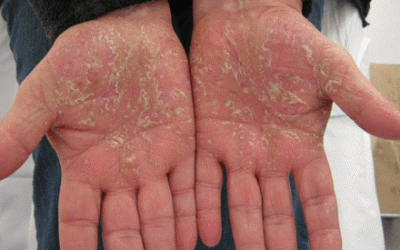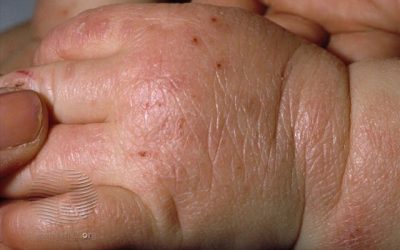Paraneoplastic dermatological manifestation of gastrointestinal malignancies
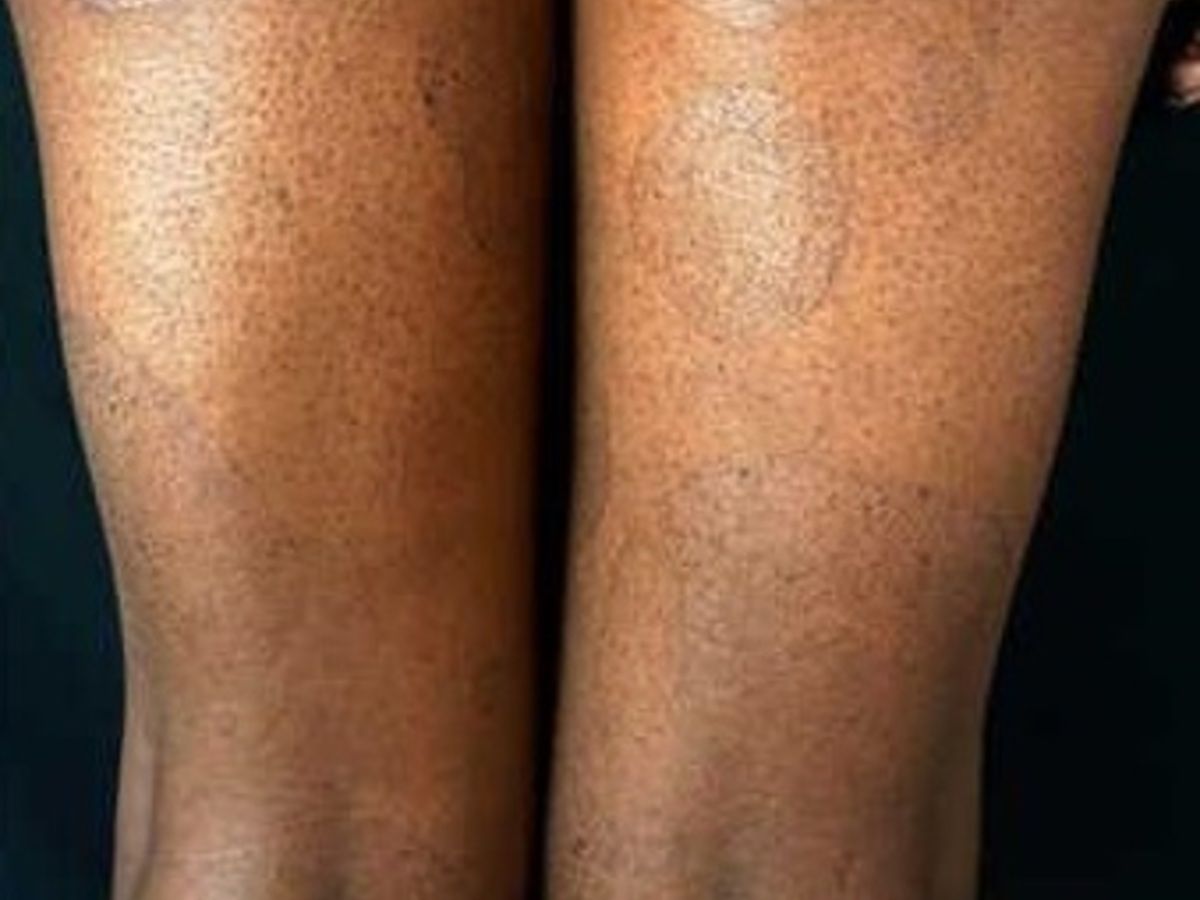
Possible skin lesions:
- Acanthosis nigricans
- Florid papillomatosis
- Necrolytic Migratory Erythema
- Palmoplantar keratoderma
- Pancreatic panniculitis
- Paraneoplastic acrokeratosis
- Pityriasis rotunda
Paraneoplastic acrokeratosis (otherwise known as Bazex syndrome) – lesions similar to psoriasis or eczema are characteristic scaly patches of purple hue. Nail damage is also possible.
Localization:
- Hands, feet, knees, ears, nose and cheeks
- May be around the nails or damage to the nails themselves

Localization:
- Typically on bending surfaces
- Other places: back of the neck, armpits, groin

Localization:
- Body folds – in the torso, groin, buttocks, thighs
- May be around the mouth area
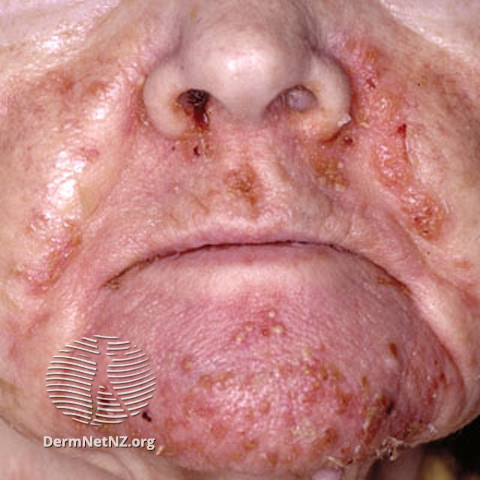
sudden onset is characterized by abundant papillomas (warts) resembling viral warts. Growths are small in size (1-3 mm in diameter), with time they spread to other areas of the body. Itching occurs in 50% of cases.
Localization:hands, feet, knees, ears, nose and cheeks.
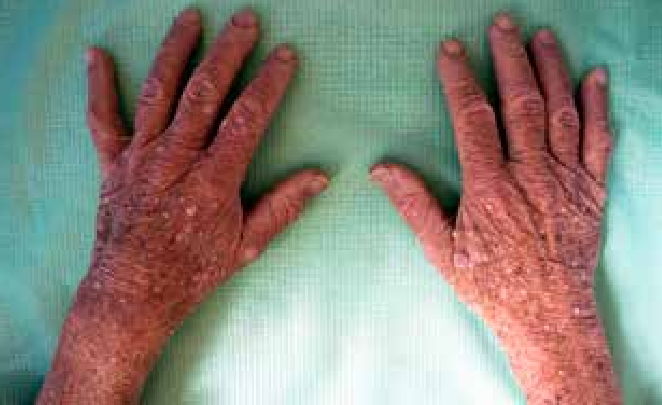
- Pink or light brown in color
- Hyperpigmented (darker than skin color) – if the skin is dark. Hypopigmented (lighter than skin color) – if the skin is light.
Localization: torso and limbs

Localization: palms and soles
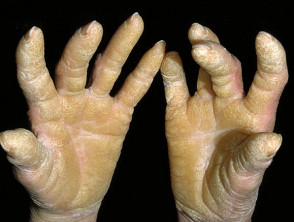
Localization: legs, torso, buttocks

Certain criteria are used to assess whether the skin disease is a paraneoplastic syndrome:
- Neoplasia and paraneoplasia begin at the same or similar time
- Parallel course of conditions (as the tumor mass decreases, skin damage also decreases or vice versa)
- Signs of a skin condition are not part of a genetic syndrome
- A certain malignancy is associated with a certain paraneoplastic skin disease
- A rare prevalence of skin disease in the general population
- A frequent association between neoplasia and paraneoplasia
Treatment
The dermatologist carefully devises a tailored treatment strategy for each patient, considering the unique aspects of the paraneoplastic syndrome and the associated cancer.
The primary approach involves addressing the underlying cause of the syndrome.
This could encompass a variety of general treatment methods. Additionally, managing the particular symptoms of the syndrome plays a crucial role in enhancing the patient’s overall well-being.

Focal alopecia
Focal alopecia causes patchy hair loss, often resulting in bald spots on the scalp. Early treatment is key to managing the condition and promoting hair regrowth, helping to restore both hair and confidence.
Palmoplantar pustulosis
Palmoplantar pustulosis is a chronic skin condition that causes painful pustules on the palms and soles. Effective treatment focuses on managing flare-ups, reducing discomfort, and improving skin health through targeted therapies.
Atopic Dermatitis in Children: Causes, Symptoms, and Treatment
Atopic dermatitis in children is a chronic skin condition that causes itchy, inflamed skin. Effective management includes identifying triggers and using treatments to soothe and protect your child’s sensitive skin, ensuring comfort and relief


